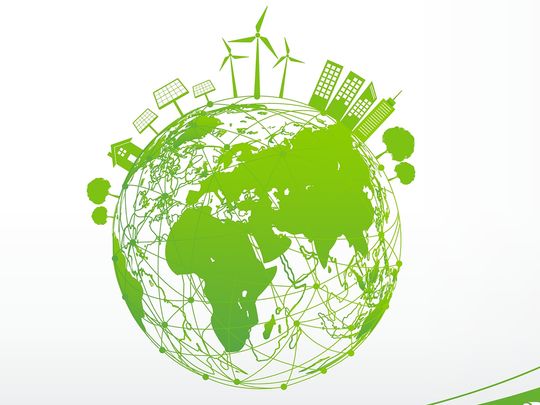
Biodiversity, an amalgamation of ecosystems, species, and genetic diversity within the genres, is vital to life on Earth. Its conservation is essential to maintain nature’s equilibrium and ensure the survival of species and the well-being of humans.
Biodiversity stabilises the environment, enabling it to withstand environmental changes and recover from natural disasters. The diverse ecosystems offer features including pollination of crops, purification of air and water, and waste decomposition.
However, the hazards — pollution degrading habitats that harm wildlife and over-exploitation through hunting, fishing, and trade, drive the species to extinction. Additionally, deforestation and urbanisation lead to climate change, alter habitats, and disrupt the biological cycles.
Therefore, conserving biodiversity should be a pledge of the governments, organisations, communities, and individuals to safeguard the rich tapestry of life for future generations.
Frontline Action
Unesco works to conserve biodiversity and sustainability of its components through designated sites, including biosphere reserves, world heritage sites, and global geoparks. In 2018, these sites protected over 10 million km.
According to the agency, biodiversity is lost at up to 1,000 times the natural rate. Despite an increase in the number of protected areas, it is declining. Therefore, these area networks must be realigned to account for climate change. Unesco stresses efforts to include social and economic systems, well-connected to ecosystem services, and the need for regional and subregional cooperation.
Read more by Abdullah Belhaif Al Nuaimi
Some crucial factors to tackle include:
Extinction of species
The number of species is due to a balance of ongoing evolutionary processes — speciation and extinction. While speciation occurs when new varieties evolve, extinction is their global loss. The high rates of species extinction driven by human activities are causing rapid decline.
The 2019 United Nations report stated that one million species were at risk of extinction. Considering an estimated 8-11 million species, about 12.5 per cent could soon become extinct. These extinctions are irreversible and a serious threat to human health and well-being.
The ratio correlates with habitat loss based on the diminishing forest area. With 90 per cent environmental damage, 50 per cent of species could go extinct, mostly in tropical rainforests, considered the most diverse biosphere being rapidly destroyed by deforestation.
Biodiversity loss
Assessing it involves classifying species based on the quantum of risk — critically endangered, endangered, vulnerable, and near threatened.
The International Union for the Conservation of Nature (IUCN) gathered information on plants, animals, fungi, and brown algae species. It listed the Emperor Penguin as a near-threatened species due to habitat loss and climate change, and the African elephant as vulnerable to poaching.
Similarly, the blue whale is endangered due to pollution, climate change, and poaching, and the pitcher plant species, which trap insects, are labelled critically endangered due to habitat loss and over-exploitation.
About 26 per cent of mammal varieties worldwide and 14 per cent of the 10,721 identified bird species are threatened. The demise of reef-building corals magnified ecological impacts, as much of the marine life depends on them.
Habitat Destruction
It means altering the environment, wherein certain species cannot survive. While human beings can modify the setting to make it habitable, other species die because their habitat including forests, coral reefs, grasslands, and rivers are eliminated.
People must be aware that home furnishings for which trees are illegally felled contribute to habitat loss and species extinction. It upsets important ecosystems like rivers and streams by altering their flow, affecting the population.
Over-exploitation
Poaching, unsustainable hunting for bushmeat, overfishing, and misusing slow-growing plants and fungi means over-exploitation of organisms faster than they can be replenished.
While elephants are poached for ivory, and rhinos for horns that are used in traditional medicines, the terrestrial animals are killed for food or requirements such as garments and jewellery. There are also concerns about turtles, amphibians, and birds.
Likewise, aquatic species, including whales, are vulnerable to over-fishing, resulting in a radical restructuring of the marine ecosystem, the outcome of which could be the loss of aquatic systems as food sources.
Pollution
It contributes to the decline of threatened species. Power plants, factories, and vehicles are common sources of air pollution. While the pollutants are directly toxic, they indirectly cause ecological harm due to carbon dioxide (CO2) emissions that lead to climate change.
The air pollutants cause respiratory issues in animals and damage vegetation. Some interact with the atmosphere resulting in acid deposition, which dislocates aquatic ecosystems, soil, and plants. Heavy metals, plastics, pesticides, herbicides, fertilisers, and sediments are examples of water pollution.
Invasive species
Introduced by humans into an ecosystem in which they did not evolve, invasive species cause ecological and economic harm, and destruction. When introduced to an area out of their native range, the non-native organisms disrupt the community.
Transportation of people and goods, including organisms for trade, has increased the introduction of species into new ecosystems. At times, these are at distances outside the range of their natural predators. They threaten other species through competition for resources, predation, or disease. Islands and lakes are particularly vulnerable to extinction threats from introduced species.
Climate change
Caused by greenhouse gases like CO2 and methane and the use of fossil fuels, climate change increases the average global temperature and results in unpredictable weather patterns. It threatens biodiversity through various mechanisms, causing species range shifts, mismatched biotic interactions, rising sea levels, and ocean acidification.
Reports indicate that 15 per cent to 40 per cent of species could become extinct by 2050, as climate change makes habitats less hospitable to insects, freshwater fishes, reptiles, amphibians, mammals, and plants.
Leading by example
Environmental activist, David Suzuki said, “If we pollute the air, water, and soil that keep us alive and well, and destroy the biodiversity that allows natural systems to function, no amount of money will save us.”
Thus, setting benchmarks for nations to follow, the United Arab Emirates (UAE), known for taking environmental issues seriously, has made massive efforts to reintroduce the critically endangered species. It has protected and conserves habitats that are part of the region’s rich biodiversity. Animals revered once and going extinct because of hunting, have made a comeback. These include the Arabian oryx and sand gazelle.
The UAE has deduced that effective biodiversity conservation requires a multifaceted approach, including:
• Establishing protected areas like national parks and wildlife reserves for habitats and species.
• Promoting sustainable agriculture, forestry, and fishing practices and restoring degraded ecosystems.
• Enforcing laws and policies to protect endangered species.
• Engaging local communities in conservation efforts.
• Raising awareness on the importance of biodiversity and the threats it faces.
Dr Abdullah Belhaif Al Nuaimi is Chairman of the Advisory Council of the Emirate of Sharjah.









